B.
Making space
Behind the scenes
Apparently "storeroom" is the magic word that will draw Registrars and Collection Managers like moths to a flame, to use a slightly inappropriate figure of speech. Neither moths nor flames are generally permitted in our storerooms, unless they are of the more symbolic kind.

Eileen Mayo Moths on the Window 1969. Relief print. Purchased, 2005. Reproduced courtesy of Dr Jillian Cassidy
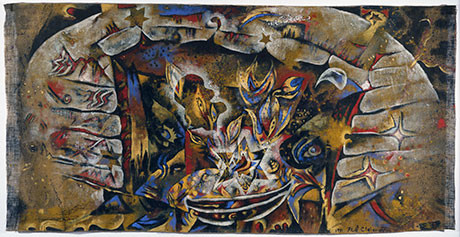
Philip Clairmont Fireplace 1971. Acrylic on hessian. Purchased, 1972. © courtesy of Rachel Power
At the recent Australasian Registrars Committee conference, we were treated to back of house tours of Brisbane's cultural institutions. While collections grow, our storerooms tend to remain the same size. So it is always good to see how our colleagues have worked with these spaces and found efficient ways to fit more in and care for their collections. It is also somewhat therapeutic to commiserate over the shared challenges of big stuff, awkward spaces, and overhead pipes taking up valuable shelf space.
With this all in mind, it was good to come back home and see lots of activity happening in our storerooms. As you are probably well aware, things have been turned upside down and inside out at Christchurch Art Gallery. Our doors are closed, and our exhibitions are being held outside the gallery walls. Our galleries are filled to the brim with collections, and our storerooms are empty.
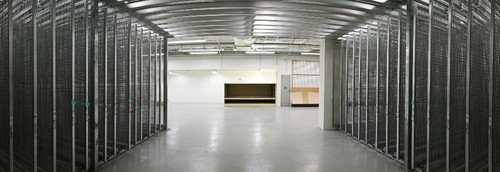
Empty Contemporary Paintings store following relocation of the collections in 2012
While I doubt anyone would choose to be in this position, it has presented us with an opportunity that many collections staff would be jealous of - the chance to reassess how our storage spaces have worked, or not, and to make changes and improvements while the collections are stored safely elsewhere.
So, what have we done? We've removed walls to create larger storage spaces; rethought where items are stored for more efficient use of space; installed new shelving units to maximise previously under-utilised areas; added locks to sliding racks and other seismic restraints to storage units; undertaken general maintenance of mobile shelving units and drawers; and repainted floors and ceilings.
Here are some of our new picture racks, installed by Building Maintenance Units (BMU). The new racks will allow us to store 25% more framed artworks. Locks have been fitted to prevent movement in the event of an earthquake.
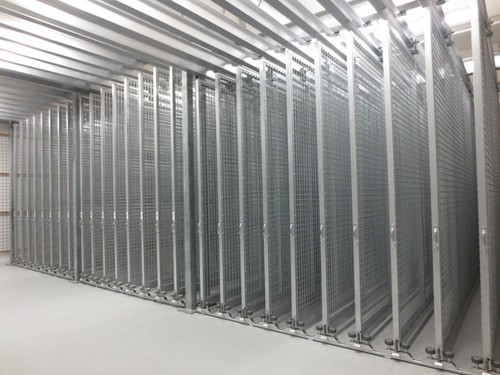
10 new picture racks (on the right) installed in the Historic Paintings store in April 2014
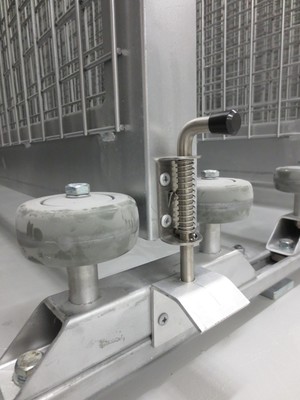
Locks fitted onto picture racks to stop them sliding out in the event of an earthquake
By shifting most of our framed works on paper collection to new storage units, we've created space to install these new shelves for medium sized sculpture, freeing up space in our sculpture store for the big stuff.
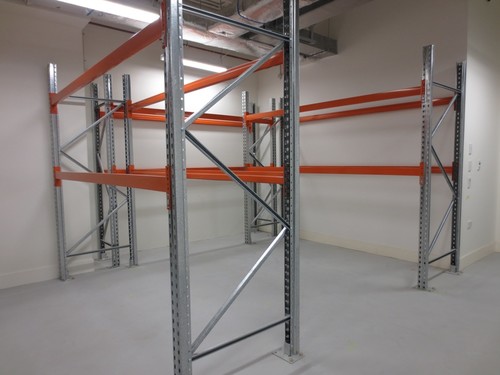
Framing for new Dexion shelves in what was previously the FWOP (framed works on paper) store
On paper, a whole lot of 'new space' sounds great, and it is. Nonetheless, the actual move of the collections back, to old and new locations, will be a juggle. We'll keep you posted on that one. Needless to say, the end result of more, better and safer storage for our collections will definitely be worth it.